ID:207 Symposium on Environmental Issues, Nuclear Disaster and Disaster Prevention
- Date
- 2015-03-16(Mon)
- Time
- 14:00-19:00(Door Open 13:30)
- Venue
- Sendai City Silver Center 2nd Seminar Room
Report has released
- Translation
- Consecutive Interpretation
Contact/Entry
E-mail:k-hase*m.tohoku.ac.jp (Please replace * to @)
Tohoku University, Graduate School of Arts and Letters
http://www.sal.tohoku.ac.jp/~hasegawa/
Organization
Tohoku University Arts and Letters
Tags
Report
| Number of participants | 80 |
|---|
The Fukushima Daiichi Nuclear Accident in March 11, 2011 is the Japan’s largest accident since the Second World War and one of the most severe accident in the histories of industrialized nations as well as the history of modern Japan. The question is what should we learn from this tragic event on disaster prevention. All of panelists and audiences of this session raised voices to criticize Japanese government and the UN office for their reluctance to discuss about the Fukushima nuclear accident and the disaster prevention on nuclear accidents, although Sendai, the conference venue is located 100 km north from the site. We are facing the post-accident reality, but the Japanese government is neglecting it. In this symposium five speakers presented their papers. The first speaker, Makoto Tsurumi reported the release and the effects of radioactive materials from the Fukushima plant within 300 km radius in contrast with the case of the Chernobyl accident in 1986. The second speaker, Takuya Tsujiuchi revealed the psychological stresses of victims and suicides or serious illness triggered by the nuclear accident based on his questionnaire surveys. He called the situation as “structured violence” and appealed to provide governmental supports. Based on their field surveys, the third and forth speakers, Hironao Ozaki and Masafumi Yokemoto analyzed victims, in Kawauchi , Iitate and so on who are demanding full compensation and accountability from the government and Tokyo Electric Power Co.. Evacuees and their communities are forced to separate their choices under growing strong pressure to return to their homes soon amid a government campaign to label their hometowns as safe. They are facing a lot of problems and anxieties about restoring their livelihoods, life planning and receiving medical service coverage. For more than eighteen months since September 15, 2013, no nuclear reactor has been in operation in Japan due to the Fukushima accident. However the current Abe cabinet is aiming toward the early resumption of nuclear power plant activity, probably some time after coming July. The fifth speaker Ken’ichi Oshima criticized this government policy as irrelevant. He revealed the expensiveness of the cost of nuclear power generation including backend costs, compensation costs, handling costs of the accident and risks to another heavy accident. Two newspapers covered on this session on the next day.
Downloads
Outline
How do we need policy changes to build more sustainable future and resilient community based on the lessons and experiences of the 3.11 disaster and the Fukushima nuclear disaster? A crisis means an opportunity to change. We will discuss about alternatives on local development, disaster prevention and energy policy including promoting renewable resources.Detail
14:00
Opening Remarks
Koichi HASEGAWA(Professor, Tohoku University)
Panel Discussion
Makoto TSURUMI (Professor Emeritus, Hirosaki University)
Ken’ichi OSHIMA (Professor, Ritsumeikan University)
Masafumi YOKEMOTO(Professor, Osaka City University)
Takuya TSUJIUCH (Associate Professor, Waseda University)
Hironao OZAKI (Associate Professor, Tokyo Keizai University) et al.
19:00
Closing Remarks
Koichi HASEGAWA(Professor, Tohoku University)


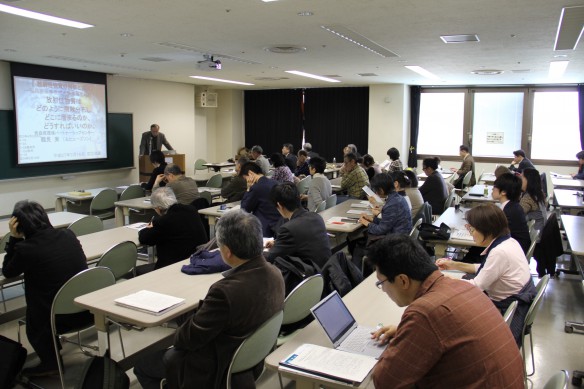

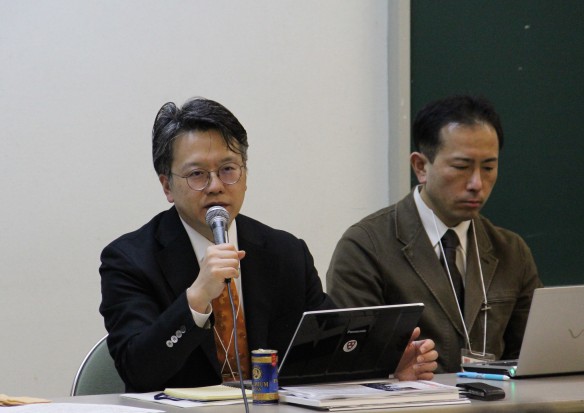
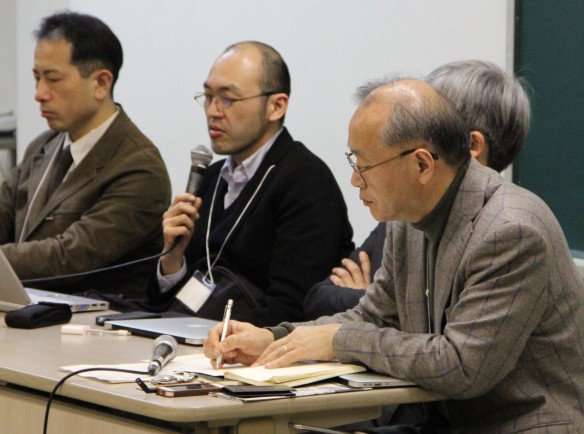
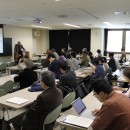
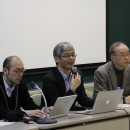
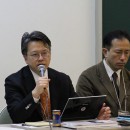

 Flyer
Flyer

